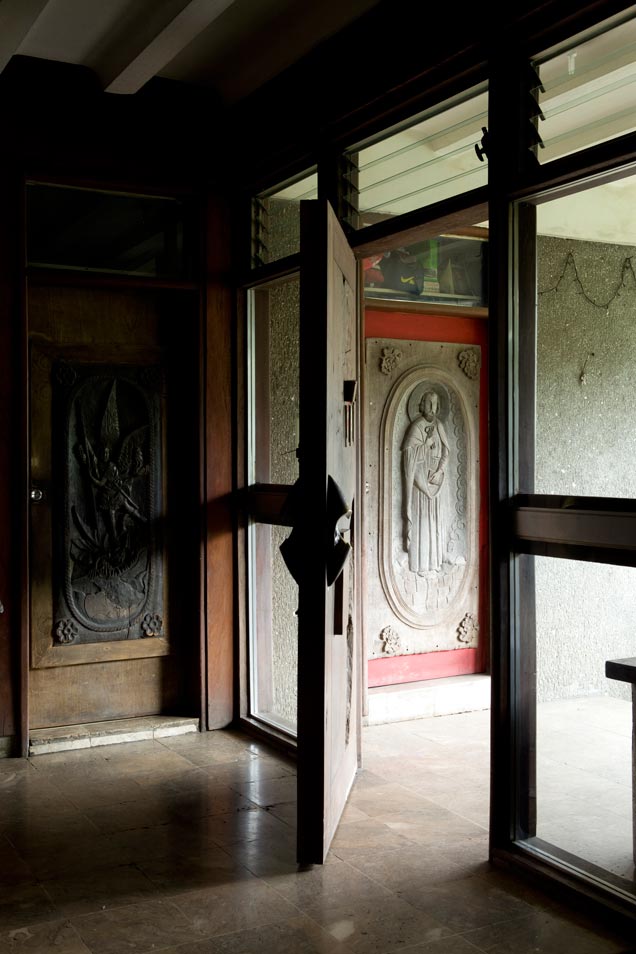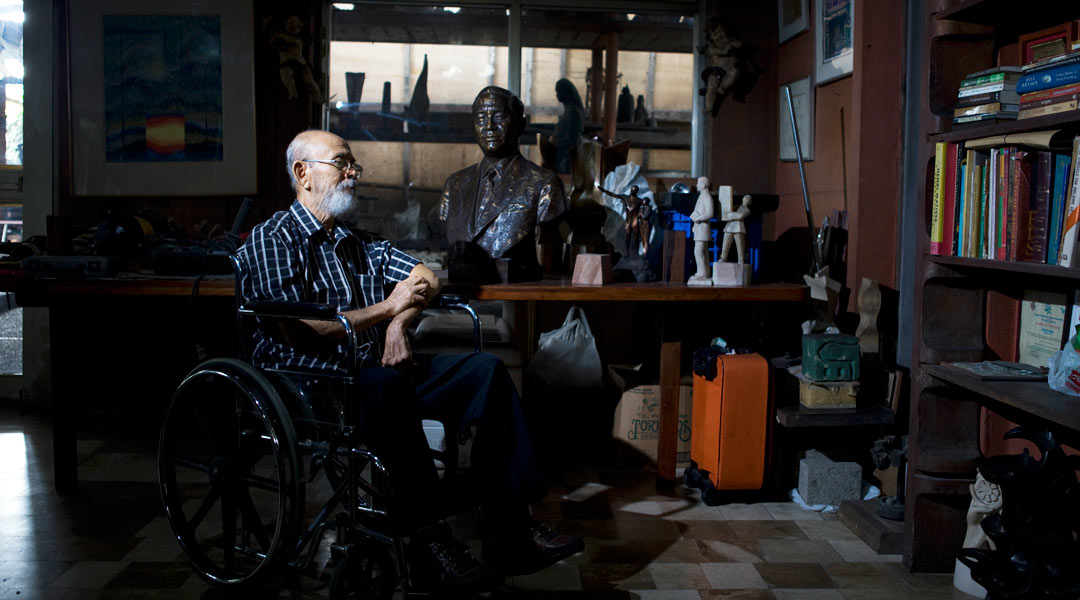
Napoleon Abueva’s Gothic “chapel” workshop
At first glance, there seems to just be a brooding, four-storey warehouse, with strange-looking gargoyles on its top terrace, jutting into one side of a street in Tierra Pura Subdivision, Quezon City. Only upon coming closer to the gate with its interestingly formed iron grills, not to mention a somewhat scandalous arch featuring a couple in flagrante delicto would you realize that this plain concrete-finished structure is adjacent to a 60s-era bungalow. This is the house and main studio of National Artist of the Philippines Napoleon Abueva, the sculptor and pioneering Filipino Modernist of the three-dimensional art form.


READ MORE: Downtown Iloilo’s collection of period architecture (circa 1920-1940)
Enfeebled by a series of ailments since late 2008, the formerly virile and physically robust sculptor has been confined to a wheelchair. His studio, now managed by his sculptor-son Mulawin, has followed suit, its former large-scale activities now greatly diminished due to the infirmity of its master.
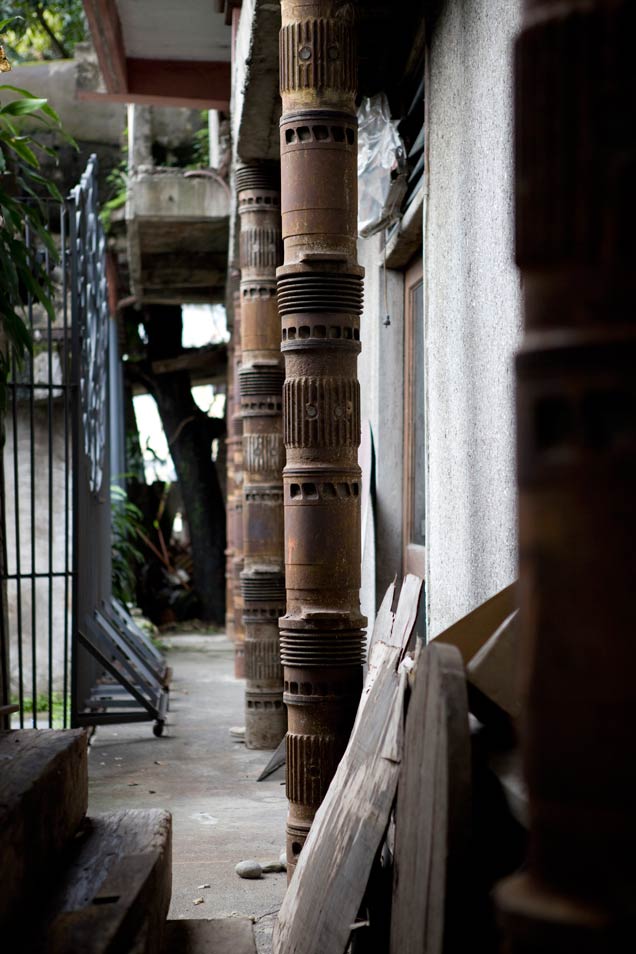
The appearance of decrepitude, however, isn’t so much because the structure is coming apart as it just has never been finished. Admittedly, the studio, which sits astride his house on a combined 2,000-square meter lot next to a creek, has always been a work in progress. The core of this complex is of course the bungalow, finished in the mid-60s when Abueva and his wife, Dr. Cherrie Abueva, were finally able to afford a house on land provided by fine arts patron Purita Kalaw-Ledesma. Like most bungalows of that period, it had a long atrium with an internal pool where Mang Billy would put some of his masterpieces, like the famous marble Kaganapan. Its light brown marble floor tiles and narra wall panels evoke a previous generation of interior design that focused on earth tones as a distinctly Filipino color sensibility. This is highlighted by some built-in pieces by Abueva, such as an elegantly-sculpted hardwood room divider seemingly turned from propeller blades, or kayak paddles. In every nook and cranny, of course, is art, not only Abueva’s but also of every major Filipino artist for the past half-century.
The transition to the studio is via the old garden lanai, which has been converted into part of the workshop’s floor, replete with concrete cast sculptures and steel armatures in different stages of completion. The lanai also contains some of Abueva’s earlier works, like a series of mid-1960s hardwood posts carved into totemic abstractions. The cavernous first floor of the adjacent studio is fronted by the first gate that we saw coming in. A second gate serves as the bungalow’s driveway to the end of the lot where another Abueva “sculpture,” Swing House, is located. The roughly eight-meter tall ceiling was done to accommodate the sculptor’s more monumental projects, and is dominated by a full-sized fiberglass copy of Guillermo Tolentino’s Oblation which Abueva had replicated for the UP campuses of Los Baños, Tacloban, Miag-ao, and Davao between 1983 and 1997.
“To the artist there is never anything ugly in nature.” – Auguste Rodin
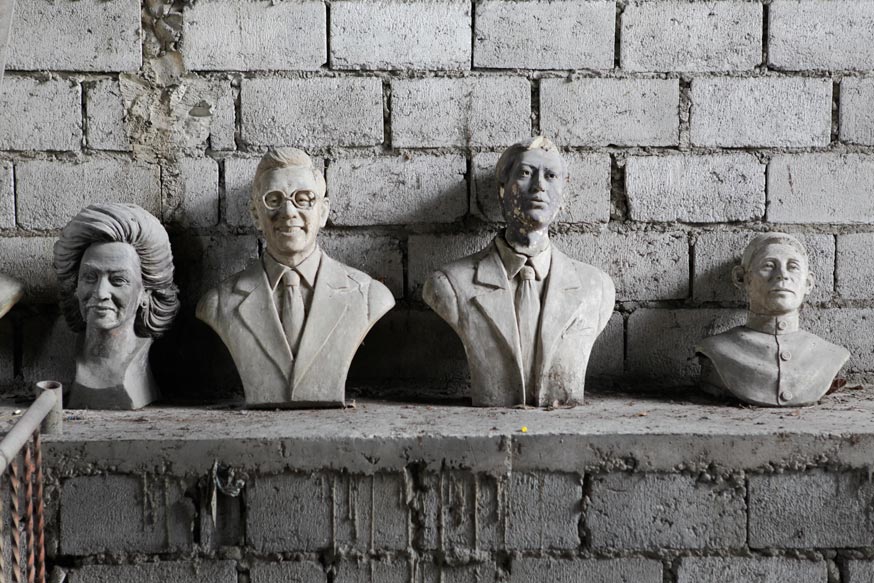
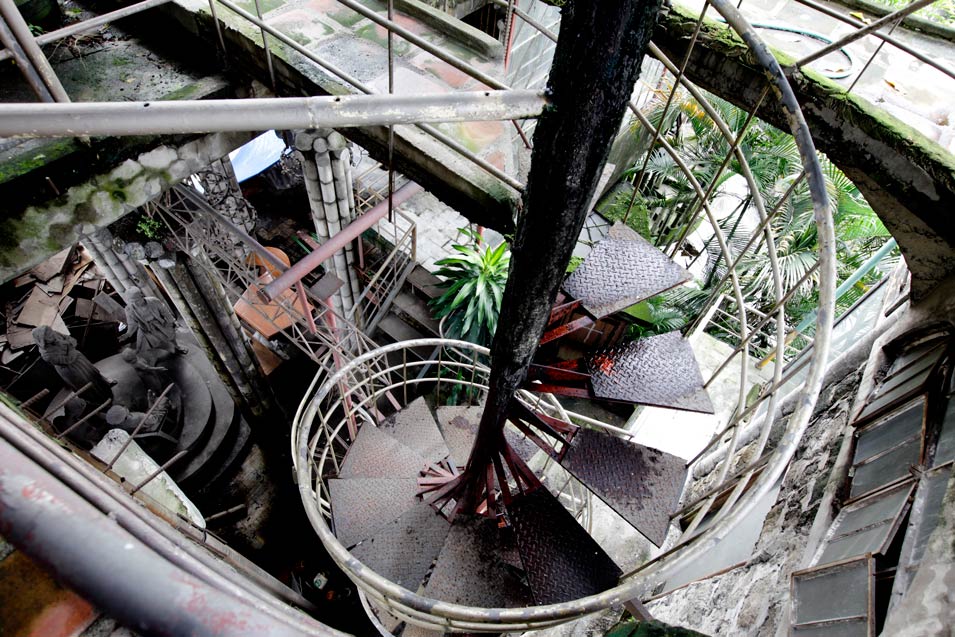
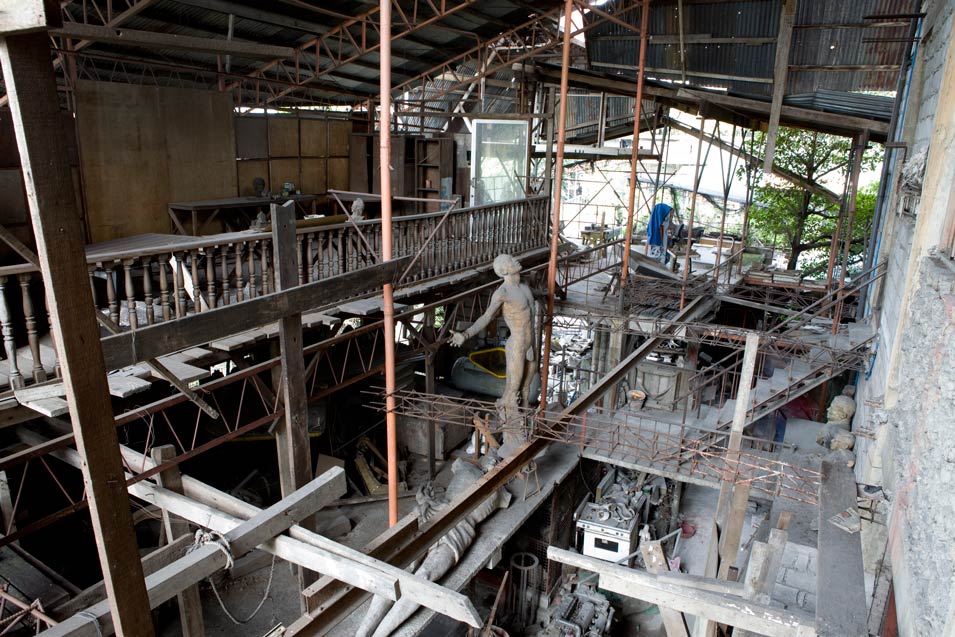
Also part of the ground floor workshop is the eccentric “chapel” built by Abueva in the mid-1990s, featuring Gothic-styled pointed arches resting on segmented concrete-block columns of Abueva’s own design. Here, as in other parts of the studio, sculptural vignettes suddenly materialize from the grime and chaos of workshop material, such as a tableau featuring the child Jesus debating with the scholars of the Temple.
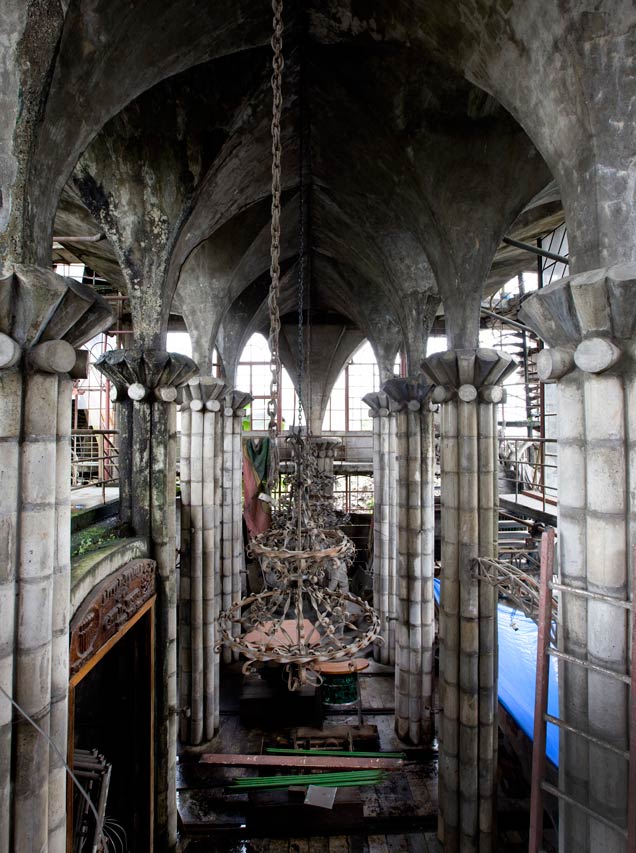
Access to the upper floors is via a spiral ramp on one side of the studio, and leads the viewer up a series of rooms that contained the other kinds of sculptural works that Abueva accommodated for various clients: roomfuls of life size busts and portraits; a specially-designed upper floor fountain pool whose water runoff leads to a second pool a floor below; and finally the top floor orchidarium (which was Dr. Abueva’s own space), containing a derelict cocktail bar and a series of bizarre, larger-than-life statues of saints, angels, and demons seemingly battling it out for control of one’s soul—if not one’s attention span. It is the incompleteness and rawness of the studio that jars one to think about the kind of Modernist aesthetics he advocated. Granted that any artist’s studio can get quite cluttered at times, it does not explain the full force of Abueva’s rambling vision that piles style on top of style in an ever-larger concatenation of art. Abstract motifs from the 60s mingle with life-like portraiture. Expressionist romance (if not raw sex) collides with divine iconography and secular subjects.
If anything, Napoleon Abueva’s agglomeration of sculptures and spaces bespeak of the need to encompass the totality of humanity’s experience, in order to make sense of the history of the nation, which conferred to him its highest artistic reward. This may also be explained by Abueva’s own experience with history: a survivor of a traumatic family massacre during World War II, he overcame the odds to rise to the top of the art world through sheer hard work and artistic output. Perhaps it is that which characterizes the magnificent incompleteness of Abueva’s studio: that much more could be retold through the power of thinking, seeing and touching than through mere words. ![]()
READ MORE: A Fitting Retrofit: The Restoration of Manila Cathedral
